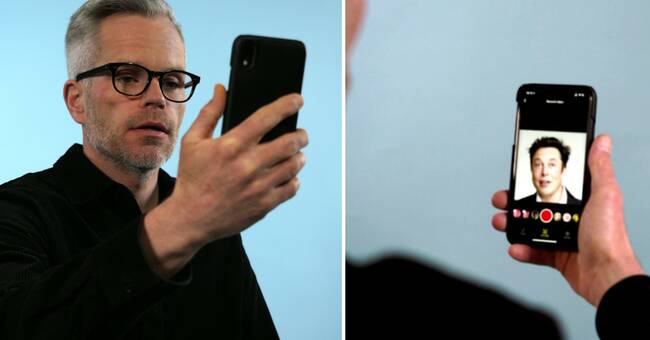Måns Zelmerlöw can be your puppet.
His facial expression is controlled by you, when you film yourself with the mobile camera and your voice comes out of his mouth (check the result above).
An easy way to make a fun video, without having to put in that much effort.
No wonder this type of Tik Toks has become popular.
Not infrequently with a famous hit song that the borrowed face sings (how many "Mai-a-hi, mai-a-hu, mai-a-ha" can we hear?).
Wombo, Avatarify are some of the apps that make it possible, whose popularity has been seen in the charts of most downloaded.
This trend of "synthetic media", as the industry itself calls it, got a boost when the genealogy service MyHeritage launched an animation function of images of dead relatives.
In just over a month, 70 million dead people have begun to roll their eyes, turn their faces and blink at the living in the descending line.
Deepfake in porn and news
We've been talking about deepfakes for years, the technology is not new, so why is it hitting right now?
- New algorithms have been created, and we have faster computer power both on the server side and in mobile phones, explains Kenneth Kershaw, vice president of D-ID, the company that developed the technology behind MyHeritage's face animation DeepNostalgia.
But it's not just dead relatives who send an air kiss through the centuries and babies who rap who are spread with this technology.
It has also created the porn genre adult deepfake and given all viral reviewers even more to do now that there is also deepfake news to reveal.
- For example, we have taken down videos where you made a politician look drunk.
When you deliberately manipulate a video with the intention of misleading, it is against our rules, explains Google and Youtube's communications manager Joakim Larsson.
Want to see ethical guidelines
Kenneth Kershaw, whose company is driving the development, believes that some form of self-cleaning is needed in the industry.
- We need to sign a promise that the technology will not be used for unethical purposes, and to introduce digital watermarking, for example, to distinguish genuine from fake.

